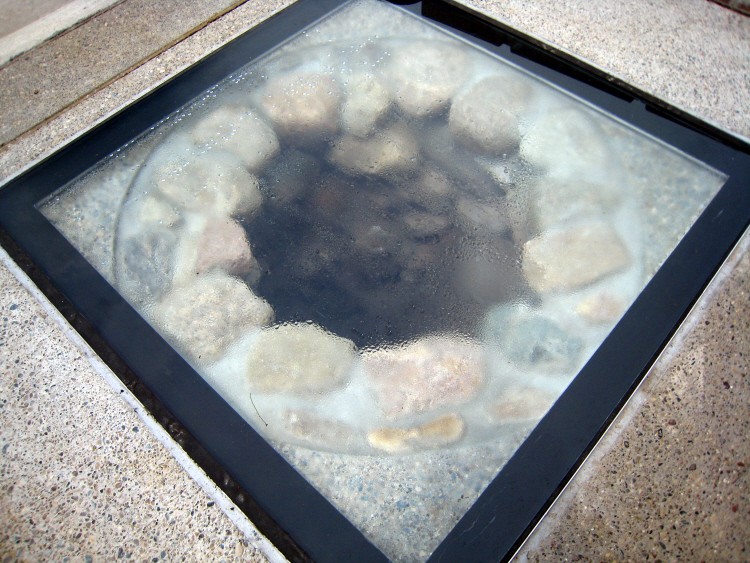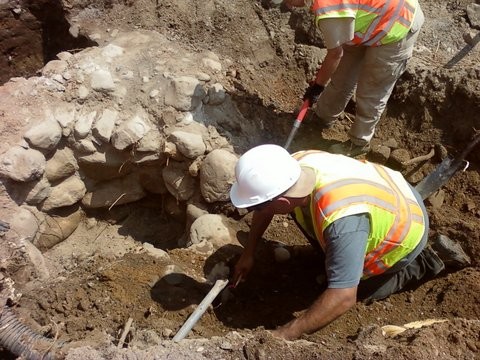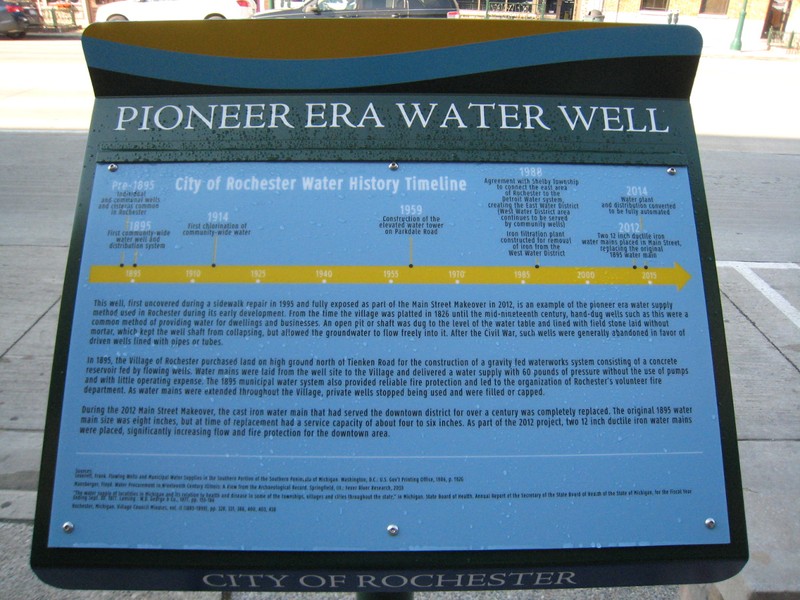Pioneer Era Water Well
Introduction
Text-to-speech Audio
Images
Pioneer Era Water Well, 2013

Pioneer Era Water Well under excavation, 2012

Pioneer Era Water Well interpretive sign, 2015

Backstory and Context
Author-Uploaded Audio
Listen to a narration of this entry's description by Deborah Larsen.
Text-to-speech Audio
In Rochester's pioneer era, hand-dug water wells such as this one would have been commonplace in the village. Such wells were dug to a depth to penetrate the water table, and then were generally lined with field stone. The stones were not set in mortar so as to allow the water to filter through the stones into the well shaft. The well may have been covered with a wooden trap door or gabled hatch to prevent debris from falling into the water supply. Early cisterns were similar to dug wells, but the reservoirs were lined with with a mortar sometimes referred to as "water lime" to make them watertight. Rainwater was then collected in the cisterns and could be used for washing or firefighting. By the mid-19th century, hand dug wells were being replaced with driven wells, in which a tube or pipe was driven into the ground to line the well shaft.
The village of Rochester established its first municipal water system in 1895. At that time, mains were laid to conduct water from a reservoir and wells located in Section 4 of Avon Township into the occupied sections of the village. This improvement also led to the establishment of a standing volunteer fire department at the same time. As the water mains of the municipal water system extended throughout the village, individual wells and cisterns became obsolete and were filled in as they fell into disuse.
This well lay hidden beneath the sidewalk along Main Street until a city repair crew discovered it in 1995. It was filled and covered again, but was fully excavated and examined by the Michigan State Archaologist's staff during the MDOT reconstruction of Main Street in 2012.
Sources
Leverett, Frank. Flowing Wells and Municipal Water Supplies in the Southern Portion of the Southern Peninsula of Michigan. Washington, D.C.: U. S. Gov't Printing Office, 1906, p.182.
Mansberger, Floyd. Water Procurement in Nineteenth Century Illinois: A View from the Archaeological Record. Springfield, Ill.: Fever River Research, 2003.
“The water supply of localities in Michigan and its relation to health and disease in some of the townships, villages and cities throughout the state.” In Michigan. State Board of Health. Annual Report of the Secretary of the State Board of Health of the State of Michigan, for the Fiscal Year Ending Sept. 30, 1877. Lansing : W.S. George & Co., 1877, pp.153-166.
Almond, Mary Beth. "Main Street Makeover Unveils Rochester's History," Rochester Post, July 3, 2012.
Deborah Larsen
Deborah Larsen
